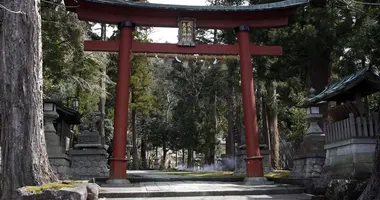Eiheiji Temple
- Published on : 20/09/2014
- by : Japan Experience
- Youtube
Eiheiji Temple: read a guide to Eiheiji Temple in Fukui Prefecture, a head temple of Soto Zen, founded by the monk Dogen in 1244.
Eiheiji Temple, Fukui Prefecture 永平寺
Eiheiji Temple, in the mountains of Fukui Prefecture, close to Fukui city, is one of the two head temples of Soto Zen Buddhism, the other is Sojoji Temple in Yokohama.
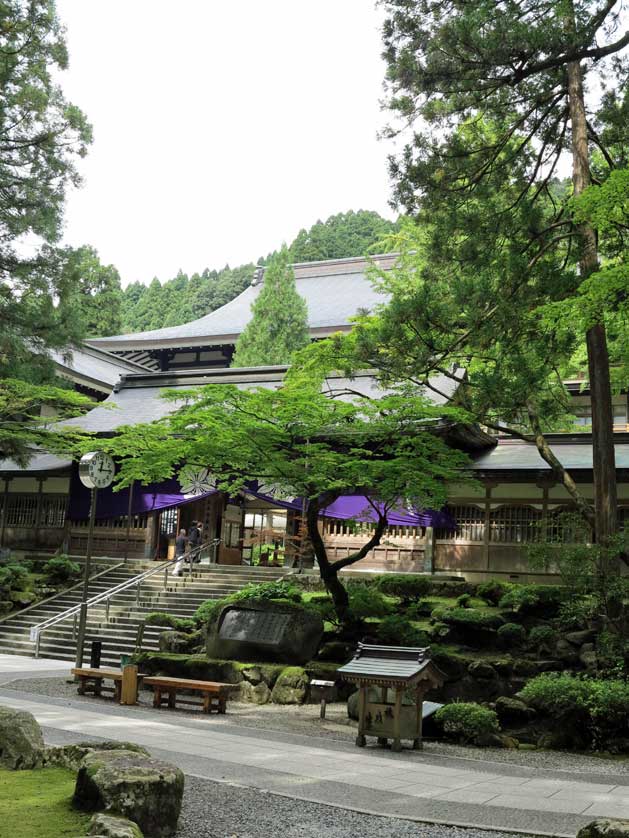 Eiheiji Temple, Fukui
Eiheiji Temple, Fukui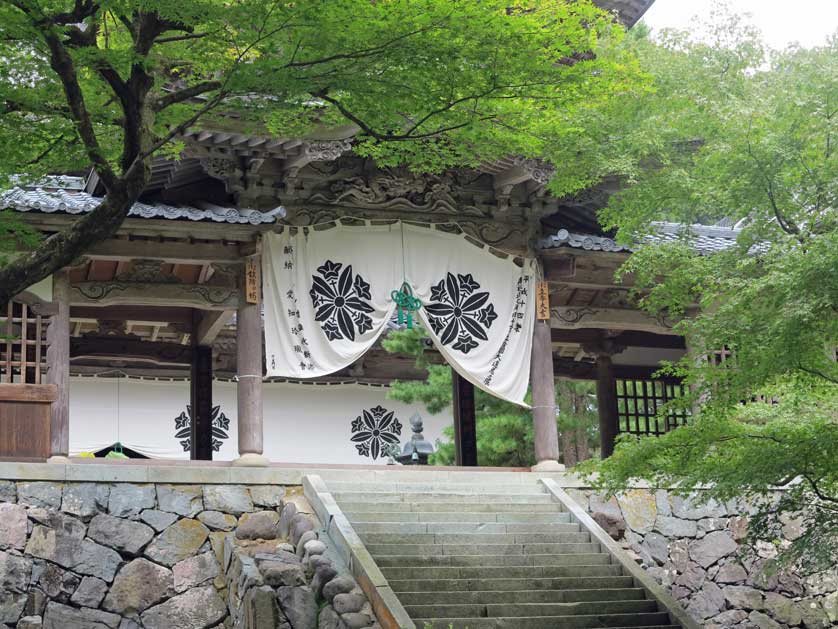 Eiheiji Temple, founded by the monk Dogen in 1244
Eiheiji Temple, founded by the monk Dogen in 1244
History
Eiheiji Temple ("temple of eternal peace") was founded by the monk Dogen (1200-1253), a Kyoto-born monk from a wealthy family, who had studied Zen in China for four years. Dogen returned to Kenninji Temple in Kyoto, before founding his own temple, Kosho-Horinji Temple, in Uji.
Later in search of a more tranquil, mountain retreat for a temple during the often violent upheavals of the Kamakura Period, Dogen was offered land by a local samurai and Zen practitioner, Hatano Yoshishige and it was here in 1244 that Dogen founded Eiheiji Temple, for him and his followers to practice shikantaza ("just sitting").
Eiheiji Temple Buildings
Eiheiji consists of around 70 buildings connected by covered walkways built over a hill. Not all the buildings of Eiheiji are open to the general public on their tour of the temple.
The Sodo or Priests' Hall is where the around 150 priests in residence at Eiheiji practice zazen. Each monk is allotted just one tatami mat (about 1mx2m) of space for his meditation practice.
The Butsuden or Buddha Hall contains three statues: Amida Butsu, the Buddha of the past, Shakyamuni, the historical Buddha and Miroku Butsu, the Buddha of the future.
The Hatto or Dharma Hall is the highest structure at Eiheiji and is used for the thrice daily services at the temple and for lectures. The Hatto at Eiheiji dates from 1843. The Hatto contains an image of Kannon and four shishi.
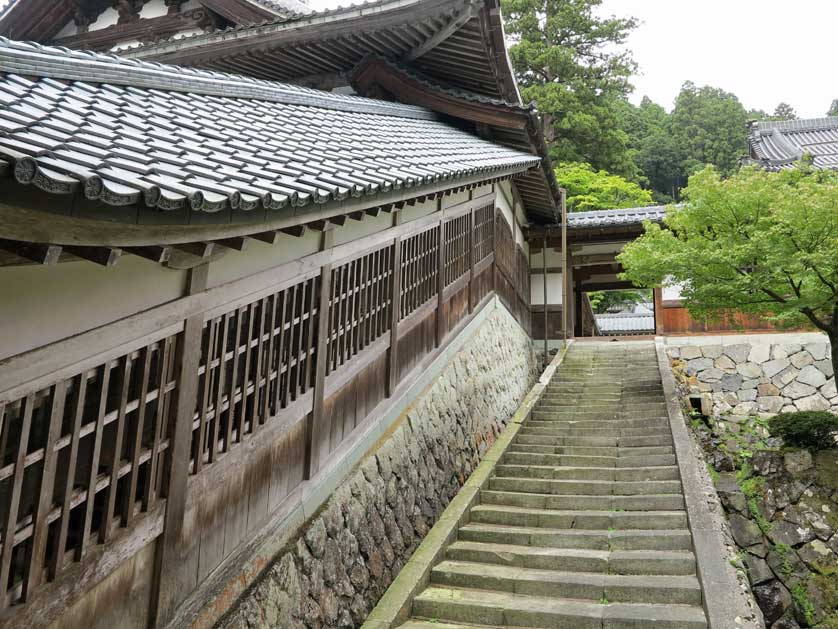 Eiheiji Temple covered walkway
Eiheiji Temple covered walkway
The Joyoden (Founder's Hall) contains a mausoleum of Dogen containing his image and ashes. Dogen also has a tomb at Kenninji Temple in Kyoto. The ashes of the succeeding head priests of Eiheiji are also stored here.
The Daikuin (Kitchen) consists of three floors and a basement, where vegetarian meals are prepared for the monks and guests.
The Sanmon (Main Gate) is the oldest structure at Eiheiji and dates from 1749. The highest level is the Rakan Hall with images of the Buddha talking to 500 of his followers (rakan). This area is not open to the public. Statues of the Shitenno or heavenly guards are on the ground level and can be viewed.
The Tosu (Toilet) is an area where silence must be maintained along with the Sodo (zazen area) and bath. The toilet area contains an image of Ususama-myoo, representing purity.
The darkened Shidoden (Memorial Service Hall) holds thousands of memorial tablets of followers of Soto Zen. Here memorial services are performed for the dead. An 18m-long set of prayer beads (juzu) made in cherry wood can be seen. It was made by a lay follower from Nagoya after World War II as a symbol of peace.
The Sanshokaku (Reception Hall), which is entered at the beginning of the temple tour, is noted for its ceiling covered with 230 paintings of mainly flowers and birds by 144 different artists.
The Yokushitsu (Bath) is used by the monks when there is a 4 or 9 in the date (every fifth day), when they bathe and shave their heads.
The Kichijokaku (Lay Center) is a modern building where lay followers stay when they come to study. It is completely self-contained with its own sleeping and bathing facilities along with rooms for zazen meditation and lectures.
The Shorodo (Belfry) contains a large bronze bell dating from 1327 rang four times a day: at morning zazen, midday service, evening zazen and bedtime.
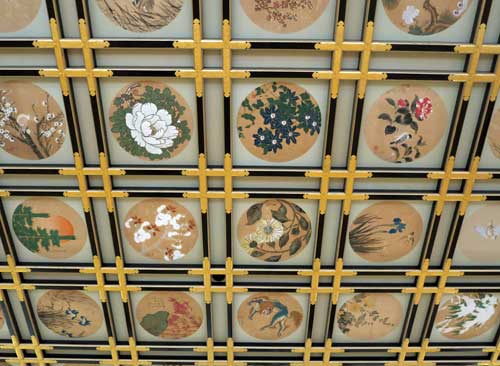 Sanshokaku (Reception Hall) ceiling, Eiheiji Temple, Fukui
Sanshokaku (Reception Hall) ceiling, Eiheiji Temple, Fukui
Access - Getting to Eiheiji Temple
Eiheiji Temple (global.sotozen-net.or.jp information in English on staying at Eiheiji)
5-15, Shihi
Eiheiji-cho
Yoshidagun, Fukui, 910-1294
Tel: +81(0)776 63 3640; Fax: +81(0)776 63 3631
Admission is 500 yen. There is a short address on proper behavior in the temple in Japanese before visitors walk through the temple buildings carrying their shoes in a plastic bag.
Eiheiji Temple can be reached in 30 minutes by hourly buses from the East Exit of Fukui Station (720 yen). Alternatively there are buses from Eiheiji-guchi Station on the Echizen Railway (420 yen; 12 minutes). Two trains an hour run to Eiheiji-guchi Station (25 minutes; 450 yen) from Eichizen Railway Fukui Station.
The bus from Eiheiji-guchi Station route is only really worthwhile if you are visiting Fukui Prefectural Dinosaur Museum and Eiheiji on the same day. Buy the 1,900 set ticket which includes entrance to Fukui Prefectural Dinosaur Museum, return train and bus fares and get off at Eiheiji-guchi Station on your way back from Fukui Prefectural Dinosaur Museum.
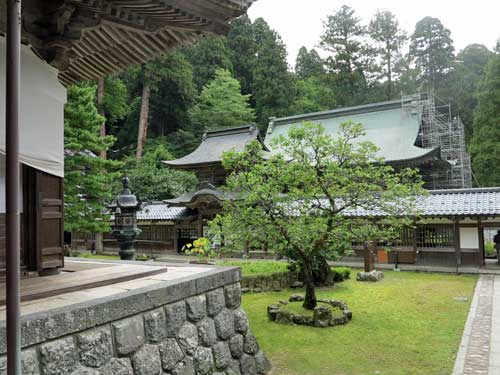 Looking towards the Sanmon Gate, Eiheiji Temple, Fukui
Looking towards the Sanmon Gate, Eiheiji Temple, Fukui Eiheiji Temple, Fukui Prefecture
Eiheiji Temple, Fukui Prefecture
